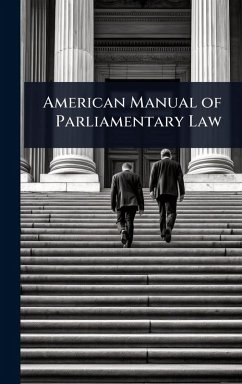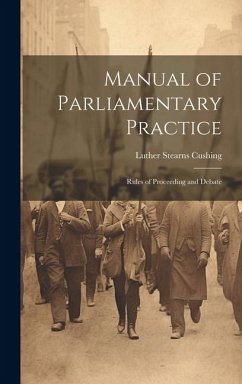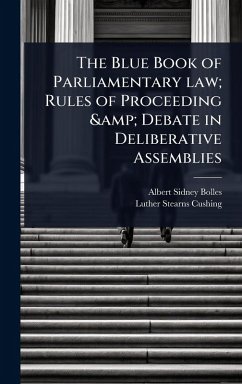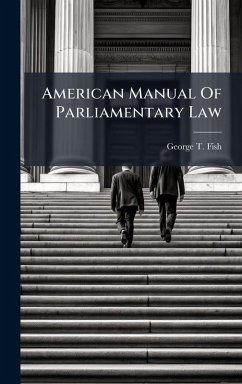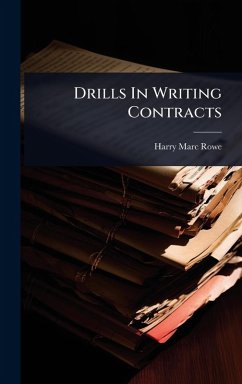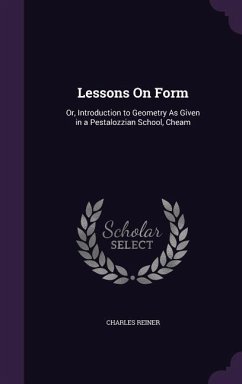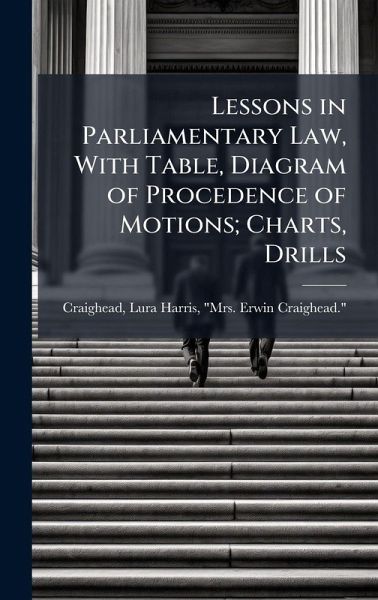
Lessons in Parliamentary Law, With Table, Diagram of Procedence of Motions; Charts, Drills
Versandkostenfrei!
Versandfertig in über 4 Wochen
30,99 €
inkl. MwSt.

PAYBACK Punkte
15 °P sammeln!
Lessons in Parliamentary Law, originally published in 1914, offers a comprehensive guide to the rules and procedures governing parliamentary debate and decision-making. Authored by Lura Harris Craighead (Mrs. Erwin Craighead), this text provides clear explanations of parliamentary motions, their precedence, and the proper methods for conducting meetings according to established rules of order. Designed for students, civic organizations, and anyone seeking to understand and participate effectively in formal assemblies, the book includes valuable tables, diagrams illustrating the precedence of m...
Lessons in Parliamentary Law, originally published in 1914, offers a comprehensive guide to the rules and procedures governing parliamentary debate and decision-making. Authored by Lura Harris Craighead (Mrs. Erwin Craighead), this text provides clear explanations of parliamentary motions, their precedence, and the proper methods for conducting meetings according to established rules of order. Designed for students, civic organizations, and anyone seeking to understand and participate effectively in formal assemblies, the book includes valuable tables, diagrams illustrating the precedence of motions, and practical drills to reinforce learning. This enduring resource remains relevant for anyone interested in mastering the art of parliamentary procedure and ensuring fair and orderly discussions in various settings. This work has been selected by scholars as being culturally important, and is part of the knowledge base of civilization as we know it. This work was reproduced from the original artifact, and remains as true to the original work as possible. Therefore, you will see the original copyright references, library stamps (as most of these works have been housed in our most important libraries around the world), and other notations in the work. This work is in the public domain in the United States of America, and possibly other nations. Within the United States, you may freely copy and distribute this work, as no entity (individual or corporate) has a copyright on the body of the work. As a reproduction of a historical artifact, this work may contain missing or blurred pages, poor pictures, errant marks, etc. Scholars believe, and we concur, that this work is important enough to be preserved, reproduced, and made generally available to the public. We appreciate your support of the preservation process, and thank you for being an important part of keeping this knowledge alive and relevant.



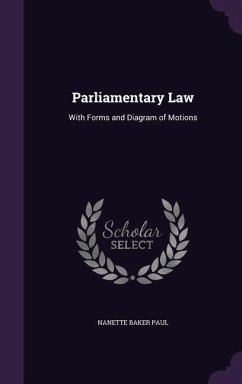
![The Constitutions Of The Company Of Watermen And Lightermen. To Which Is Prefix'd, A Table, And Thereunto Annex'd, An Abstract Of The Respective Duties Of Rulers, &c. [by L. Braddon.] Cover The Constitutions Of The Company Of Watermen And Lightermen. To Which Is Prefix'd, A Table, And Thereunto Annex'd, An Abstract Of The Respective Duties Of Rulers, &c. [by L. Braddon.]](https://bilder.buecher.de/produkte/74/74418/74418685n.jpg)
